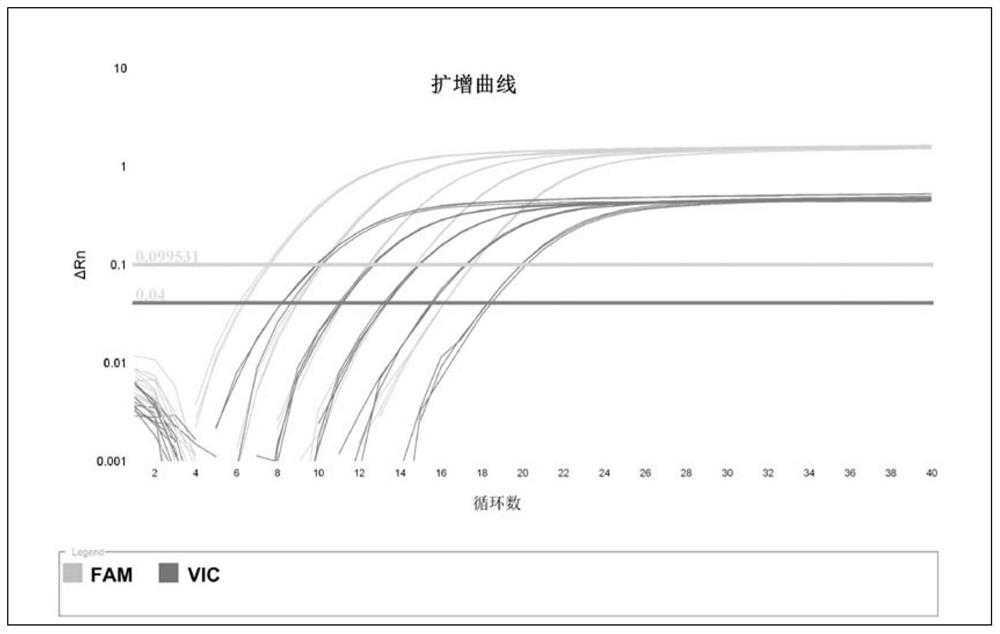A method to detect heterogeneity of mitochondrial genome a3243g locus
A mitochondrial genome and site technology, applied in the field of biomedicine, can solve the complex problems of the heterogeneity of the mitochondrial genome A3243G site
- Summary
- Abstract
- Description
- Claims
- Application Information
AI Technical Summary
Problems solved by technology
Method used
Image
Examples
Embodiment 1
[0033] 1. Extraction of peripheral blood or tissue genomic DNA
[0034] 1. Isolation of Peripheral Blood Leukocytes
[0035] (1) Take 5 mL of cubital venous blood from the patient, anticoagulate with EDTA, and centrifuge at 2500 rpm for 10 min;
[0036] (2) Carefully suck off the upper layer of plasma, add 3 times the volume of red blood cell lysate to the lower layer of blood cell pellet, shake well, and ice-bath for 15 minutes.
[0037] (3) Centrifuge at 2 500 rpm for 10 min, discard the supernatant, and repeat step 2 once.
[0038] (4) Centrifuge at 3 000 rpm for 10 min, discard the supernatant, and obtain white blood cells.
[0039] 2. Extraction of leukocyte or tissue DNA
[0040] (1) Take white blood cells, add 600 μL STE lysis buffer, 10 μL proteinase K and 2 μL RNase A, digest at 55°C for 20 minutes (the extraction of tissue DNA is similar to that of white blood cells, cut it with scissors before digestion);
[0041] (2) After the lysate is cooled to room temperatu...
PUM
 Login to View More
Login to View More Abstract
Description
Claims
Application Information
 Login to View More
Login to View More - R&D
- Intellectual Property
- Life Sciences
- Materials
- Tech Scout
- Unparalleled Data Quality
- Higher Quality Content
- 60% Fewer Hallucinations
Browse by: Latest US Patents, China's latest patents, Technical Efficacy Thesaurus, Application Domain, Technology Topic, Popular Technical Reports.
© 2025 PatSnap. All rights reserved.Legal|Privacy policy|Modern Slavery Act Transparency Statement|Sitemap|About US| Contact US: help@patsnap.com



